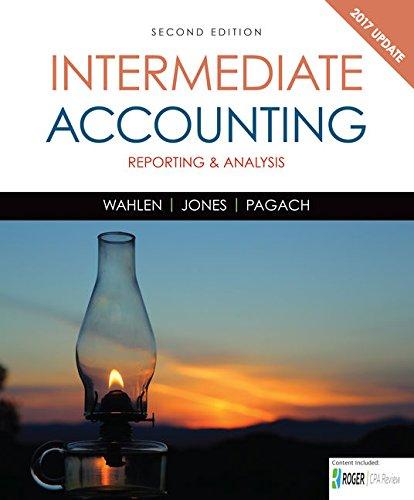
1.
Determine the required number of deposit and the amount of last deposit.
1.
Explanation of Solution
Annuity: An annuity is referred as a sequence of payment of fixed amount of
Cash flow occurs during the first day of each time period is known as an annuity due, whereas cash flow occurs during the last day of each time period is known as an ordinary annuity.
FVO represents Future Value of ordinary annuity = $40,000, and i represents interest rate for each of the stated time periods = 7%
Determine the number of deposits required.
In the future value of an ordinary annuity of $1 table (at the end of the time value money module), it can be identified that the factor of 10.000000 is lies between 7 and 8 number of period at 7% column. This reveals that T Houser has to make 7 deposits of $4,000 each, and the 8th deposit would be less than the amount of $4,000.
Now, to determine the amount of the last deposit, first calculate the future value of an annuity due of 7 deposits of $4,000 at 7%, using future value of annuity due formula.
Here,
FVD represents future value of annuity due.
Here, 10.259803 is taken from Future value of ordinary annuity of $1 table, where n = 8, i =7%. Factor of annuity due is calculated with the help of ordinary annuity table, as there is no separate table provided in this module for future value of annuity due.
Finally, determine the amount of required last deposit.
Therefore, the amount of last deposit will be $2,960.79.
Therefore, the required number of deposit of $4,000 each 6 months is 7 and the amount of last deposit is $2,960.79.
2.
Determine the required number of payments need to be made and the amount of last payment.
2.
Explanation of Solution
Annuity: An annuity is referred as a sequence of payment of fixed amount of cash flows that occurs over the equal intervals of time.
Cash flow occurs during the first day of each time period is known as an annuity due, whereas cash flow occurs during the last day of each time period is known as an ordinary annuity.
PVO represents Present Value of ordinary annuity = $20,000.
Determine the number of payments required.
In the present value of an ordinary annuity of $1 table (at the end of the time value money module), it can be identified that the factor of 5.000000 is lies between 8 and 9 number of period at 12% column. This reveals that Person JC has to make 8 payments of $4,000 each year, and the 9th payment would be less than the amount of $4,000.
Now, determine the amount of reduction in principal after 8th payment, using present value of ordinary annuity formula (PVO).
Here, 4.967640 is taken from Present value of ordinary annuity of $1 table, where n = 8, i =12%.
Now, $129.44
Now, determine the amount of required last payment.
Hence, the amount of last payment will be $358.95.
This 2.773079 is taken from Future value of $1 table, where n = 9, i =12%.
Determine the required number of payment of $4,000 each year is 8 and the amount of last payment is $358.95.
Want to see more full solutions like this?
Chapter M Solutions
Cengagenowv2, 1 Term Printed Access Card For Wahlen/jones/pagach’s Intermediate Accounting: Reporting And Analysis, 2017 Update, 2nd
- Please don't use AI And give correct answer .arrow_forwardLouisa Pharmaceutical Company is a maker of drugs for high blood pressure and uses a process costing system. The following information pertains to the final department of Goodheart's blockbuster drug called Mintia. Beginning work-in-process (40% completed) 1,025 units Transferred-in 4,900 units Normal spoilage 445 units Abnormal spoilage 245 units Good units transferred out 4,500 units Ending work-in-process (1/3 completed) 735 units Conversion costs in beginning inventory $ 3,250 Current conversion costs $ 7,800 Louisa calculates separate costs of spoilage by computing both normal and abnormal spoiled units. Normal spoilage costs are reallocated to good units and abnormal spoilage costs are charged as a loss. The units of Mintia that are spoiled are the result of defects not discovered before inspection of finished units. Materials are added at the beginning of the process. Using the weighted-average method, answer the following question: What are the…arrow_forwardQuick answerarrow_forward
- Financial accounting questionarrow_forwardOn November 30, Sullivan Enterprises had Accounts Receivable of $145,600. During the month of December, the company received total payments of $175,000 from credit customers. The Accounts Receivable on December 31 was $98,200. What was the number of credit sales during December?arrow_forwardPaterson Manufacturing uses both standards and budgets. For the year, estimated production of Product Z is 620,000 units. The total estimated cost for materials and labor are $1,512,000 and $1,984,000, respectively. Compute the estimates for: (a) a standard cost per unit (b) a budgeted cost for total production (Round standard costs to 2 decimal places, e.g., $1.25.)arrow_forward
 Intermediate Accounting: Reporting And AnalysisAccountingISBN:9781337788281Author:James M. Wahlen, Jefferson P. Jones, Donald PagachPublisher:Cengage Learning
Intermediate Accounting: Reporting And AnalysisAccountingISBN:9781337788281Author:James M. Wahlen, Jefferson P. Jones, Donald PagachPublisher:Cengage Learning
